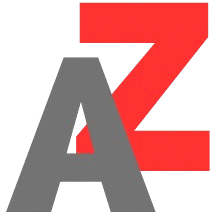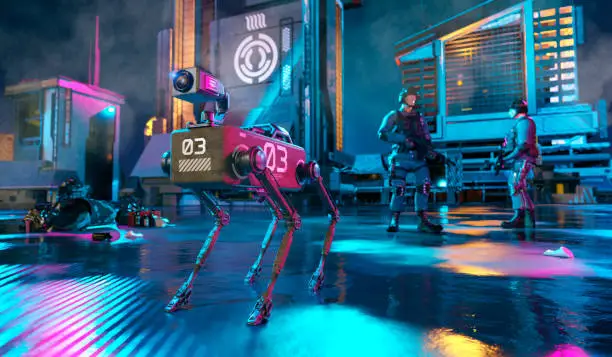The Rise of AI-Generated Pets
Artificial intelligence (AI) has revolutionized the creative industries, encompassing design, writing, and photography. In 2025, one of the most exciting and widely discussed trends is the creation of ultra-realistic pet images using artificial intelligence (AI). From lifelike dogs and cats to imaginary creatures, AI tools can now render animal visuals so realistic that they often rival photographs.
Whether you’re an artist, developer, marketer, or pet lover, choosing the right AI tool to create realistic pet images is crucial. In this article, we’ll explore the top AI tools capable of producing lifelike pets, analyze their strengths and limitations, provide implementation tips, and guide you in making the best choice for your needs.
What Makes an AI-Generated Pet Realistic?
Before diving into the tools, it’s important to understand the criteria used to define “realistic” in AI-generated pet imagery:
- Texture & Fur Detail: Proper rendering of fur, whiskers, and other fine textures.
- Lighting & Shadows: Naturalistic lighting that mimics real-life conditions.
- Anatomical Accuracy: Correct proportion and muscle structure of animals.
- Eye Realism: The ability to capture expressive and detailed eyes.
- Natural Poses: Animals depicted in believable, organic positions.

1. Midjourney v6
Platform: Discord-based AI art generator
Best For: Professional designers, marketers, and creative projects
Strengths:
- Incredibly detailed fur and facial expressions
- Ultra-high resolution with artistic control
- Intuitive prompt-based generation
Example Prompt:
“Golden retriever puppy lying in grass, ultra-realistic, 8K, soft lighting, high detail”
Use Cases:
- Pet merchandise designs
- Children’s book illustrations
- Social media branding
Limitations:
- No free tier
- Requires Discord knowledge
Link: https://www.midjourney.com
2. DALL·E 3 (via ChatGPT or Bing Image Creator)
Platform: Web-based, integrated into ChatGPT (Plus) and Bing
Best For: Casual users, bloggers, educators
Strengths:
- Seamless integration with OpenAI tools
- Simple to use with natural prompts
- Effective with references (text and image)
Prompt Example:
“A realistic image of a Siberian Husky sitting in a snowy field, 4K resolution”
Use Cases:
- Blog visuals
- Educational materials
- Interactive storytelling
Limitations:
- Resolution not as high as Midjourney
- Limited stylistic control
Link: https://chat.openai.com
3. Leonardo AI
Platform: Web-based AI art suite
Best For: Designers, developers, indie game creators
Strengths:
- Photorealistic models
- Workflow flexibility with prompt tuning
- Image-to-image support for editing existing pet photos
Use Cases:
- Game characters
- Pet NFT projects
- Digital art prints
Limitations:
- Some features behind a paywall
- Requires login/account
Link: https://leonardo.ai
4. Playground AI
Platform: Web tool with access to multiple models (Stable Diffusion, Playground v2)
Best For: Budget-conscious creators, students, freelancers
Strengths:
- Free usage tiers
- Supports prompt history and bulk creation
- Offers stylized realism
Use Cases:
- Social media avatars
- Blog illustrations
- Personal projects
Limitations:
- Limited quality compared to premium tools
- Interface is less intuitive
Link: https://playgroundai.com
5. Runway ML (Gen-2 for AI Pet Videos)
Platform: Web-based video generation suite
Best For: Motion content creators, YouTubers, brands
Strengths:
- Can animate pets with realistic motion
- Text-to-video and image-to-video options
Use Cases:
- Animated pet intros
- Short-form content for TikTok and Instagram
- Explainer videos
Limitations:
- Requires a strong PC/browser
- Paid plans required for high quality
Link: https://runwayml.com
Benefits of Using AI for Pet Creation
- Creative Freedom: Instantly create imaginary or customized pet breeds
- Speed: Save hours of design and drawing time
- Cost Efficiency: Avoid expensive photo shoots or illustrations
- Marketing Appeal: Engaging visuals increase click-through and shares
Limitations and Ethical Concerns
- Bias in Datasets: Some tools may lack breed diversity
- Misuse Potential: Fake images used for scams or misinformation
- Copyright Ambiguity: Generated content may raise usage rights questions
Internal Tools for Content & AI Tech
Related Articles from TheAzTech.org:
Tips for Crafting Better Pet Prompts
- Be specific: Include breed, setting, lighting, and emotion
- Use style tags like: “ultra-realistic, 8K, cinematic, soft focus”
- Try variations: Change poses or environments
Example Prompt:
“A fluffy Persian cat sitting on a windowsill during golden hour, realistic shadows, cinematic”
Future of AI-Generated Pets
In the near future, AI-generated pets will go beyond static images:
- Interactive avatars in VR and games
- AI companions with behavioral traits
- Hyper-personalized digital pets for mental health and therapy
With models like Sora from OpenAI entering video generation, the line between real pets and AI-generated ones continues to blur.
Real-World Use Cases
- E-commerce: Virtual pets for product demos (pet beds, food, grooming)
- Entertainment: Animated pets for films and games
- Education: Teaching kids about animal breeds using generated visuals
- Marketing: Social media campaigns with AI mascots
Conclusion: Which Tool Should You Choose?
There is no one-size-fits-all answer. Here’s a quick summary:
| Tool | Best For | Unique Feature |
|---|---|---|
| Midjourney | High-end realism & fine detail | Superior fur and lighting rendering |
| DALL·E 3 | Ease of use and accessibility | OpenAI integration, quick prompts |
| Leonardo AI | Custom workflows and photorealism | Fine-tuned styles and image editing |
| Playground AI | Free experimentation | Budget-friendly, versatile |
| Runway ML | Video and motion | Animated pet generation |
For ultimate realism, Midjourney is your best bet. For ease and versatility, DALL·E 3 and Leonardo AI are highly effective.
No matter your goal, AI tools are now powerful enough to bring even the most imaginative pets to life with stunning realism.



